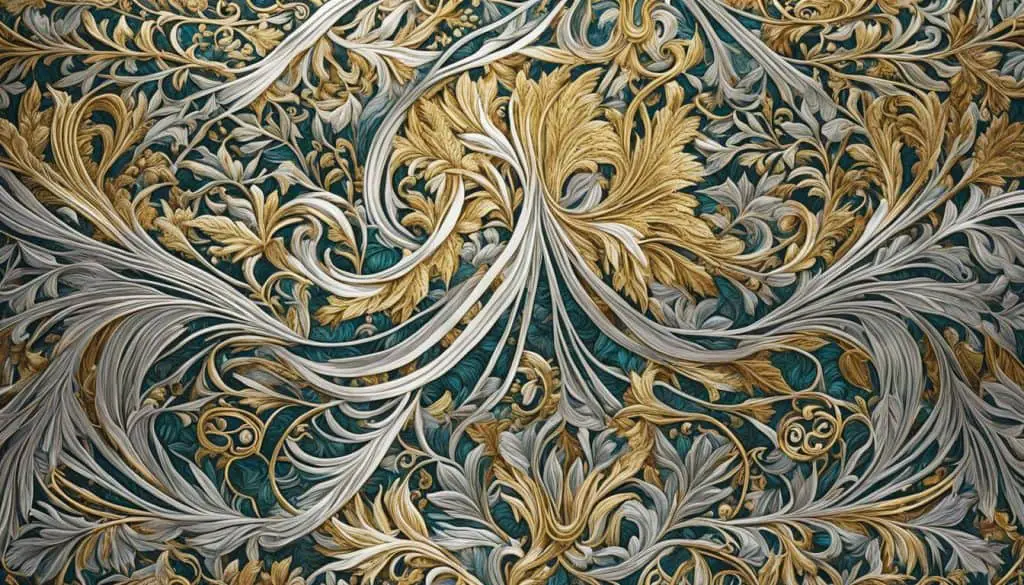Table of Contents
Adam and Eve, the iconic couple from the biblical account of creation, have captivated the imaginations of people for centuries. Their story in the Garden of Eden serves as a cautionary tale, reminding us of the consequences of disobedience.
But beyond the fall and the punishment that followed, is there hope to be found in their story?
Can their journey through sin, atonement, and redemption offer a glimmer of hope for humanity?
Join us as we explore the timeless narrative of Adam and Eve, shedding light on the moments that inspire hope in the face of a fallen world.
Make Sure You Watch The Video: I would love for you to subscribe to my YouTube channel as well… Thanks in advance!!
The Protoevangelium: A Promise of Hope (Genesis 3:15)
One of the most direct instances of hope in the story of Adam and Eve is found in the protoevangelium, as proclaimed by God after their fall.
Genesis 3:15 reveals that the offspring of the woman will bruise the serpent’s head, offering hope to humanity by assuring victory over evil and sin. This prophecy lays the foundation for the hope of redemption throughout the story.
“And I will put enmity between you and the woman, and between your offspring and hers; he will crush your head, and you will strike his heel.” – Genesis 3:15
| Keywords | Highlights |
|---|---|
| Hope | Assurance of victory over evil and sin |
| Protoevangelium | The first Gospel, the promise of hope |
| Genesis 3:15 | The scripture revealing the promise |
| Offspring | The future generations of the woman |
God’s Provision: Garments of Hope (Genesis 3:21)
Despite the consequences of their actions, Adam and Eve find hope in God’s provision of garments. After realizing their nakedness, God lovingly provides them with garments of skin, symbolizing His care for them even in their fallen state.
“And the LORD God made for Adam and for his wife garments of skins and clothed them.” – Genesis 3:21
God’s act of clothing them implies His provision for their immediate needs and offers a glimmer of hope for the future. This act hints at the idea of atonement and redemption, as covered by the shedding of innocent blood to provide a covering for their shame.
The significance of these garments lies not only in their physical purpose but also in their spiritual symbolism. By providing garments, God acknowledges Adam and Eve’s fallen state and demonstrates His commitment to caring for them even in the midst of their disobedience.
These garments of hope serve as a tangible reminder that God’s provision extends beyond the immediate consequences of sin. They foreshadow the ultimate atonement and redemption that would be fulfilled through Jesus Christ, as He became the sacrificial Lamb to cover the sins of humanity.
God’s act of providing garments also reveals His unfailing love and mercy towards Adam and Eve, showcasing His willingness to care for and restore His creation. It establishes a precedent of compassion and grace that gives hope to all who find themselves in the fallen state.
Just as God lovingly clothed Adam and Eve, He desires to clothe us with garments of righteousness through the atoning work of Jesus Christ. It is through this divine provision that we can find hope and assurance of redemption, even in our own fallen state.

Naming Eve: Hope for Continuity (Genesis 3:20)
In the aftermath of their transgression, Adam’s act of naming his wife as Eve reflects a powerful message of hope amidst the consequences they faced. As stated in Genesis 3:20, Eve signifies the “mother of all the living,” symbolizing an optimistic outlook for the future.
By bestowing this name upon his wife, Adam expresses a profound expectation of life, continuity, and the unfolding of God’s promise despite the challenges that lay ahead. The naming of Eve represents a steadfast belief in the continuation of humanity and the faithfulness of God’s divine plan.
This act of naming in the face of consequences serves as a reminder to embrace hope even in the darkest of times. It signifies Adam and Eve’s recognition that despite their missteps, God’s promise of redemption and restoration endures.
“Naming Eve as the mother of all the living reveals Adam’s unwavering faith in God’s plan for humanity. It highlights their expectation of life and continuity, despite the tragic consequences they experienced in the Garden of Eden.” — Bible Scholar
Through naming Eve, Adam exemplifies the power of hope and demonstrates the resilience of the human spirit. Despite the heaviness of their choices, they cultivate an outlook that looks beyond the immediate repercussions, anticipating the fulfillment of God’s promise in the unfolding of future generations.
Hope for Future Generations
The act of naming Eve not only carries hope for Adam and Eve themselves but also extends its significance to future generations. As the mother of all the living, Eve becomes a symbol of hope and continuity for all humanity.
Their expectation of life and their faith in God’s plan lay the foundation for future generations to discover their purpose and find hope in times of uncertainty. This naming serves as a testament to the enduring nature of God’s promise and the unfailing hope it brings.
The Table below depicts the significance of naming Eve as the mother of all the living:
| Key Points | Implications |
|---|---|
| Optimistic outlook despite consequences | Hope remains even in the face of adversity |
| Expectation of life and continuity | Belief in the fulfillment of God’s promise |
| Symbol of hope for future generations | Inspiration for perseverance and faith in God’s plan |
Life Goes On: Hope Outside Eden (Genesis 3:22-24)
Even after being expelled from Eden, Adam and Eve’s story continues with the birth of their children.
This serves as a sign of hope, illustrating that life goes on outside of Eden despite the judgment and consequences they faced. It signifies that while sin has altered the course of human history, God’s creation and His plans for humanity endure, offering hope for the future.
With their expulsion from Eden, Adam and Eve had to face the judgment for their disobedience and the inherent consequences of sin. However, amidst the turmoil, the birth of their children represents a continuation of life and a glimmer of hope.
It shows that despite the alteration of human history, God’s creation and His plans for humanity remain steadfast.
By bringing forth new life, Adam and Eve demonstrate that they have not been left without hope. Their children embody the potential for growth, redemption, and the fulfillment of God’s purpose.
Each child born outside of Eden symbolizes the continuation of the human race and the opportunity for future generations to experience the hope that springs from our Creator’s design.
“And the Lord God said, ‘Behold, the man has become like one of us in knowing good and evil. Now, lest he reach out his hand and take also of the tree of life and eat and live forever —’ Therefore the Lord God sent him out from the garden of Eden to work the ground from which he was taken. He drove out the man, and at the east of the garden of Eden he placed the cherubim and a flaming sword that turned every way to guard the way to the tree of life.” – Genesis 3:22-24
The expulsion from Eden was a consequence of their actions, yet it did not mark the end of their story. Instead, it became a chapter of hope, as Adam and Eve embraced their new reality outside of Eden, raising their children and facing the challenges of a fallen world.
This continuation highlights the resilience of humanity and the enduring promise of hope in the face of adversity.

| Hope Outside Eden: Key Points | Genesis 3:22-24 |
|---|---|
| Expulsion from Eden | God’s judgment and consequences for the Fall |
| Birth of Children | Continuation of life and a sign of hope |
| Alteration of Human History | Impact of sin on the course of humanity |
| God’s Creation and Plans | The enduring nature of God’s design and purpose for humanity |
Despite the circumstances, Adam and Eve’s story reminds us that life goes on outside of Eden. Their experience teaches us that hope can be found even in the most challenging times, and God’s plans for humanity are not thwarted by sin or judgment.
The birth of their children signifies that the story of hope continues, with each generation having the opportunity to embrace and fulfill their part in God’s ultimate plan.
The Persistence of Relationship: A Basis for Hope (Genesis 3:15-24)
Despite the fall, there remains a form of dialogue and relationship between God and Adam and Eve. God’s continued engagement with them, even in the act of issuing consequences, indicates that their relationship was not utterly severed.
This provides a basis for hope in a restored relationship with God, paving the way for redemption and reconciliation.
In Genesis 3:15-24, we witness the consequences of Adam and Eve’s disobedience. They were banished from the Garden of Eden, and their lives were forever impacted. Yet, amidst the weight of these consequences, there is a glimmer of hope.
Despite the separation caused by sin, God does not completely abandon Adam and Eve. He continues to communicate with them, demonstrating His steadfast love and desire for relationship.
“And the Lord God said to the woman, ‘I will greatly multiply your pain in childbirth, in pain, you will bring forth children. Yet your desire will be for your husband, and he will rule over you.'” – Genesis 3:16
Through this engagement, we see the persistence of relationship. God addresses both Adam and Eve, speaking directly to them, even as He pronounces the consequences of their actions.
Despite the heaviness of the situation, God’s words carry an underlying message of hope. They provide a glimpse into His redemptive plan, promising ultimate restoration and reconciliation.
This persistence of relationship lays the foundation for the hope that would be fulfilled in the narrative of salvation history. It sets in motion God’s divine plan to restore humanity’s broken relationship with Him through the sacrifice of Jesus Christ.
In the midst of their exile from Eden, Adam and Eve found solace in God’s continued presence and engagement. Despite their disobedience, they experienced His discipline and love.
This serves as a powerful reminder that no matter how far we may stray, God never gives up on us. He patiently pursues and seeks to restore our relationship with Him, offering hope for redemption.
The Consequences of Disobedience
As a result of their disobedience, Adam and Eve faced various consequences that changed the course of their lives. These consequences included pain in childbirth, the toil and labor of life outside the Garden, and ultimately, death (Genesis 3:16-19).
However, even in the midst of these consequences, God’s engagement with Adam and Eve showed His commitment to their well-being. He provided for their immediate needs by making garments of skin to clothe them (Genesis 3:21), symbolizing His care and continued provision.
While the consequences of their disobedience were severe, God’s continued relationship and engagement with Adam and Eve offered a glimmer of hope. It demonstrated His unwavering love and highlighted His desire for restored fellowship with His creation.
Cultivating Hope in Restored Relationship
Adam and Eve’s story serves as a reminder that no matter how far we may wander, God always offers hope for restored relationship. Their experience highlights the depth of God’s love and His unwavering commitment to His creation.
In the midst of the consequences they faced, Adam and Eve found hope in knowing that their relationship with God was not permanently severed. It provided a foundation for future generations to seek reconciliation and redemption in Him.
As we reflect on the story of Adam and Eve, may we find hope in God’s persistent pursuit of relationship with humanity. Despite our own failures and mistakes, we can trust that God’s love remains steadfast. He seeks to restore and reconcile us to Himself, offering us the hope of renewed relationship and eternal life.

Labor with Purpose: Finding Hope in Work (Genesis 3:19)
After the Fall, Adam and Eve faced the consequences of their actions in the form of a curse. One of these consequences was the introduction of toil and labor as an integral part of their daily lives.
However, amidst the curse, there is a glimmer of hope to be found in their work. Through their labor, Adam and Eve have the opportunity to participate in the ongoing act of creation, sustaining themselves and their descendants.
Despite living in a fallen world, work serves a greater purpose. It offers a sense of meaning and fulfillment, enabling individuals to contribute their unique skills and talents to God’s plan.
The act of work allows us to embrace our role as stewards of creation and actively engage in the ongoing work of redemption.
When we toil in our respective labor, we find purpose and dignity, recognizing our value as co-creators with God. Regardless of the nature of the work, whether it be manual labor, intellectual pursuits, or artistic endeavors, our contributions matter.
Each task accomplished, no matter how big or small, brings us one step closer to fulfilling the purpose God has placed within us.
As we work, we also experience the sustenance that comes from our labor. It provides for our physical needs and supports our families and communities. By working diligently and responsibly, we can ensure the provision of not only our immediate needs but also contribute to the collective well-being of society.
“And to Adam he said, ‘Because you have listened to the voice of your wife and have eaten of the tree of which I commanded you, “You shall not eat of it,” cursed is the ground because of you; in pain you shall eat of it all the days of your life; thorns and thistles it shall bring forth for you; and you shall eat the plants of the field. By the sweat of your face you shall eat bread, till you return to the ground, for out of it you were taken; for you are dust, and to dust you shall return.'” – Genesis 3:19
Genesis 3:19 serves as a reminder of the toil and labor we face in a fallen world. However, it also offers hope. Despite the challenges and difficulties, our work has meaning and purpose.
It allows us to participate in God’s ongoing creation, contribute to the betterment of society, and sustain ourselves and future generations. Through our labors, we can find hope and fulfillment, knowing that our efforts are part of God’s redemptive plan for the world.

How Can Adam and Eve’s Story Provide Insights on Falling in Love?
Adam and Eve’s story in the Bible offers rich biblical insights on love. Their relationship illustrates the joy and challenges of falling in love. It shows how love can bring fulfillment and also lead to difficult choices. By exploring their story, we can gain valuable insights into the complexities of romantic relationships.
The Birth of Children: New Opportunities for Hope
The birth of Cain and Abel, and the subsequent offspring, serves as a powerful testament to the enduring hope found amidst the consequences of Adam and Eve’s actions.
Each new life that comes into existence represents not only the miracle of human birth but also a fresh opportunity for redemption and the continuation of God’s divine plan for humanity.
Despite the fall and the challenges that followed, the command to be fruitful and multiply stands as a reminder that hope springs anew with every new generation. Through the birth of children, the cycle of life persists, keeping God’s plan for humanity moving forward in a world that has been touched by sin.
Cain and Abel, as the firstborn of Adam and Eve, embody the hope that redemption is possible. Their lives reveal the potential for reconciliation and restoration, giving us a glimpse into the possibilities that lie ahead.
Their existence assures us that despite the mistakes made in the Garden of Eden, God’s plan for humanity remains alive, offering hope and a chance for a better future.






